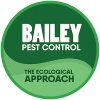It’s taken a while but spring is finally here. However, whilst we may relish the warm weather, there’s a sting in the tail. Now is the time wasps come out of hibernation and start looking for a new place to build a nest. Preferring to find a pre-existing nook instead of creating their own cranny, wasps are more than happy to settle in your loft or shed roof.
Stay safe in the Sussex countryside
It’s actually only female wasps that sting. However, when a swarm descends on your picnic, you’re probably too busy running away to figure out which ones are female.
The best way to evade a wasp sting is to do the following:
- Leave those brightly-coloured clothes at home, as well as strong-smelling perfumes and deodorants
- Cover up as much as possible (also a great away to avoid sunburn!)
- Use an insect repellent spray on exposed skin
- Don’t leave sweet food and drink lying around uncovered
- Avoid a stung bum by watching out for wasps before sitting down
What to do if you find a wasp nest in your home
During May, a wasp nest is only the size of a tennis ball. However, by July, it swells to the size of a rugby ball. Depending on the wood pulp used to build it, the nest can be either grey or straw in colour with dark and light swirls.
If you think there’s a nest in your home but can’t find it, watch the wasps to see where they fly to. Once you’ve found it, call us on 01273 775941. The average nest can have thousands of inhabitants – trying remove it on your own is very dangerous. If wasps pose a threat to your family or members of public, we’ll remove the problem quickly and efficiently. To find out more information, visit our Wasp Nest Control page.


